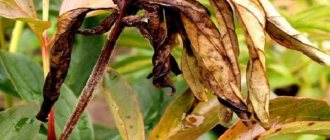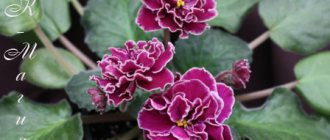Recommendations for planting and care
The great advantage of Lebetskaya violets is their unpretentiousness in flower care. If the bush is grown correctly, problems may not arise at all.
What type of soil does he like, lighting, degree of moisture, planting container?
To properly grow violets, it is necessary to create favorable conditions indoors, as well as plant the flower in nutritious soil. The optimal temperature for keeping is 20-26 ℃. You should beware of drafts, as the plant does not respond well to temperature fluctuations.
For maintenance, it is necessary to select places with diffused light so that the plant does not get burned. With a lack of light, flowering will not be abundant. The soil is regularly fed with mineral fertilizers. To do this, use superphosphate and carry out the procedure twice a month.
Water the bush once a week so as not to flood it, otherwise the soil will compact and become unusable. After watering, the soil is loosened to a depth of 3-4 centimeters.
Important! To grow, you need to select neutral soil; in acidic soil, the flowers of the bush will begin to dry out and turn pale.
The main difficulties in caring for a plant
There are no serious difficulties in growing. The main thing is not to flood the bush and monitor the lighting. When water stagnates in the soil, pests and infectious diseases can appear.
How Saintpaulia Magenta propagates
Violet LE Magenta can be propagated by seeds or vegetatively. At home, the second method is often used. Vegetative propagation involves dividing a bush or cutting a leaf. Dividing the bush is used at the moment when the plant stops blooming. Description of technology:
- The bush is taken out of the pot and the future baby is cut off with a sharp knife.
- The seedling is transferred to a small container and covered with a jar to create greenhouse conditions.
- Every day it is necessary to ventilate and water the violet with a small amount of water.
The original bush should be freed from dry parts and transplanted into a new pot. Requirements for the mother bush: the leaf must be young from the middle or top row, there should be no spots on the surface.
The cuttings are cut at an angle of 45° and placed in a container with boiled water and activated carbon. When roots about 1.5 cm long appear, the branch can be transplanted into the ground. If necessary, provide support for leaves. In the future, they are cared for as for an adult plant.
Problems during cultivation
Bullfight violet: description of the variety, photo, cultivation features
Since the Magenta violet is a capricious plant, any incorrect action regarding the regime can cause problems.
The main difficulties and their solutions are listed below:
- Crushed inflorescences - overheating. Move the plant to a cooler place.
- The foliage has faded - there is a draft. Provide the plant with safe ventilation and keep it in a place protected from temperature changes.
- Growth has slowed down, there is no flowering - lack of nutrients. Fertilize on time, alternate organic complexes with mineral ones.
- The appearance of rot spots on leaves and stems (fusarium) is a sharp drop in temperature. During the rest period, the temperature is reduced gradually, by several degrees (temperature below +16 ° C is critical). The second reason is humidity. It is necessary to monitor the watering rate.
- Brown dry spots on the foliage are signs of burns. South windows should have a protective film or curtain.
- Powdery mildew (white spots on green parts) - high humidity. Do not over-water the flower. Use watering methods recommended for the variety. Fungal diseases (fusarium, powdery mildew) can be prevented by spraying with a solution of potassium permanganate once a month. Flowers are difficult to treat: the delicate foliage does not withstand spraying with fungicides. Remedy: after treatment for medicinal purposes, transplant to a new location.
Then the bush is treated with green soap (10 g/1 l of water). After water procedures, the foliage should be thoroughly blotted with a napkin.
Saintpaulia Magenta is loved by gardeners for its large and bright flowers. You can achieve flowering by following the care rules and providing the plant with the necessary microclimate.
Possible problems in growing
If not cared for properly and in inappropriate conditions, the violet simply rots. If the plant does not have enough light, there is a deficiency in minerals - the leaves turn yellow.
Violet flowers beautifully combined snow-white frames with deep red petals
Also, the foliage becomes covered with spots due to merciless pests:
- aphid;
- nematode;
- thrips;
- whitefly
Specially developed chemical preparations - insecticides - show the best effectiveness in combating them.
Violet Le Magenta is affected by a number of diseases:
- Fusarium - rotten spots on leaves and stems. The appearance is associated with a sharp decrease in temperature (especially often observed in winter).
- Powdery Roma - white spots. Starts due to high humidity. To prevent this, you should take preventive measures - spray the plant with a solution of potassium permanganate once every thirty days.
Violet also suffers from late blight, leaf rot and the formation of gray rot. To prevent such consequences, you need to take the right approach to caring for Saintpaulia and periodically spray it with fungicidal preparations.
The description of the flower under study shows that this violet is quite beautiful and requires due attention. However, flower growers who already have experience in growing Saintpaulias are unlikely to see any difficulties. However, novice plant lovers will be able to provide proper care if they adhere to the above rules.
Reproduction
Summer twilight violet: variety description, planting and care
Theoretically, Saintpaulia Magenta can be propagated by seeds and the vegetative method. In practice, only the second method is used in home gardening. If propagated vegetatively, then two options are applicable: by dividing the bush and by leaf.
Dividing the bush is used when the plant has flowered.
The division technology is as follows:
- The bush is carefully dumped out of the container, and the baby is separated with a sharp knife.
- The delenka is planted in a small pot, up to 6 cm in diameter, and covered with something, forming something like a greenhouse.
- Ventilate and water in small portions daily.
- The mother bush is freed from dry parts and transplanted into a new pot.
The requirements for it are:
- the sheet should not be old and not from the lowest row;
- absence of signs of disease on the material (suspicious spots, burn marks);
- the cutting must be healthy, and the plate must be elastic and dense.
Further sequence of actions:
- The cuttings are cut at an acute angle of 45°.
- Root in boiled water, adding activated carbon, which will prevent rotting.
- After roots 1–1.5 cm long appear, the leaf cuttings are transplanted into the ground.
- Bury the cutting into the soil no more than 1 cm, and if necessary, provide a support for the leaf.
- Further care is the same as for an adult plant.
Did you know? South Germanic tribes celebrated the first day of spring when the first violet was found. And the find promised a profitable marriage and prosperity in family life to the lucky one.
Transplantation after purchase and during reproduction
After purchase, experts recommend replanting the violet as early as possible. For this, soil and a pot of suitable size are selected.
Note! It is best to start transplanting and propagation in early March. Reproduction takes place in three ways: dividing the bush, leaves or seeds. Dividing the bush is used most often, as this method is simple and effective.
In order for the violet to take root, you must adhere to the following rules:
- the leaf or baby is planted in the center of the pot (up to 6 cm in diameter);
- 1 tbsp is enough for watering. spoons of warm water.
In the future, it is necessary to regularly ventilate and ensure that the soil does not dry out.
Important! Seed propagation is used only by breeders to develop new varieties of Saintpaulia.
Transplantation from the mother plant
Evergreen Meyer lemon: description, plant care, reproduction, diseases and pests
The mother plant helps children and stepchildren gain useful elements for future independent life.
Stepchildren must reach a certain height and gain at least 3 leaves in order to separate from the mother plant.
As soon as all proportions are maintained, the young animals must be separated for further development.
Deadlines
In variegated violets, the babies appear in a light shade. They can be replanted into a separate pot when the leaves have gained enough green pigment. An early landing will lead to their death.
The best time for replanting is summer or autumn, when there is still plenty of daylight.
In winter, growth stops and the plant will sit for a long time without signs of growth. To speed up growth, additional lighting and warmth are installed.
Technology
The separation occurs as follows:
- The offspring, together with the maternal element (leaf, fragment, peduncle), is pulled out of the pot. Freed from the earth;
- The shoots are carefully separated from each other so as not to damage the fragile root system. Small children can be left for further growth with the mother plant;
- Each shoot must have its own root system;
- If the stepson appears in the axils of the leaves, it is separated with a toothpick. In this case, there is no root system, and the stepson is sent into the ground to form a root.
Separation of the baby from the mother plant.
Seating process
The offspring are pulled out of the pot. They are freed from the ground and separated from each other by hand. Prepare the soil, baking powder, drainage, and pots.
All children are seated in separate containers.
Features of soil and container selection
The soil for young pets should be loose. Buy ready-made soil for violets in specialized stores.
Perlite or vermiculite will help increase breathability. Lay the bottom with expanded clay or foam.
The diameter of the first pot should be 3 cm. So that the soil does not become sour and the plant does not die.
The stepson is placed in vermiculite soil.
How to properly bury a violet in the ground
A hole is made in the soil, and the shoot is carefully placed and the roots are straightened. Another layer of moist, but not wet, soil is poured on top.
The growing point should be above the soil level. This is done to prevent moisture from getting into the outlet when watering.
Aftercare
The nuances of how to care for violet babies:
- the air temperature should be between 22-24 degrees C;
- Watering is done with warm, settled water in small portions. Repeated watering is done after the top layer has completely dried;
- a pot with a young plant is placed in a bag or covered with a transparent lid. For example, from under a cake. The flower is left under cover for 3-4 weeks;
Children in the greenhouse.
- as soon as new leaves appear, it means that Saintpaulia has taken root. Gradually teach your teenager to walk without shelter. Only then remove the bag;
- choose a window sill on the north-west or north-east side.
Disease Prevention
Preventive actions and proper care will help you avoid the disease:
- using old pots will lead to bacterial diseases, so treat them with boiling water and disinfectants;
- overwatering can cause the formation of rot;
- hypothermia threatens rotting of the root system and the development of infectious diseases;
- water getting on the leaves leads to the formation of gray rot, botrytis.
Features of violet propagation
Uzambara violet can reproduce in several ways. Each of them is suitable for different occasions. The first flowering of the plant should be expected a year after planting.
Reproduction options:
- Sheet. You need to cut the leaf using scissors, which must first be disinfected. The cut is made diagonally, after which the sheet is lowered into settled water. After some time, the first roots will appear. When the roots reach 4 cm or more, the plant can be planted in the ground.
- Peduncles, stepsons. The method is suitable for preserving a certain variety, as it helps the plant retain the qualities of the mother flower. To do this, you need to carefully separate the violet baby from the main part and immediately plant it in the ground.
- Seeds. This method takes the longest. Initially, you need to moisten the seeds, then mix them with coal, then with sand. They are subsequently sown.
The propagation of violets using the leaf method is most often used, since it does not require special skills. And with proper care, the plant always blooms and pleases the owner.
Watering rules dictated by Amadeus
Violet is important in matters of hydration. She does not like excessive humidity, drying out of the soil surface, or getting water on rosettes, leaves and flowers, since all plant tissues are vulnerable and quickly rot. Therefore, gardeners recommend watering using the “in a tray” method. It is carried out like this: a container with a violet is placed in a tray half filled with water, kept for 20-30 minutes, and the remaining moisture must be removed, since stagnation of water will not allow the roots to breathe fully.
Saintpaulias are not sprayed, but they maintain a fairly high air humidity, which is achieved by installing containers with wet pebbles next to the plant or household humidifiers. The leaves of the plant also need care. Periodically they are wiped with a soft flannel slightly moistened with water, removing dust and giving the violet the opportunity to fully breathe and successfully form.
Story
There is one interesting moment hidden in the history of this species. As you know, violets were first mentioned in the myths of the ancient period. But the problem is that the plant from ancient Greek mythology and what is now generally called violets are two different biological species. "Violets" (Saintpaulias) were discovered in the mountains of eastern Africa at the end of the 19th century. They were found by the commandant of the German colony, Walter von Saint-Paul (the culture was named after him).
The scientific description of the plant and the first production of flowering seedlings are the merit of the botanist Hermann Wendland. Saintpaulia was introduced into mass circulation surprisingly quickly. It was found in 1892, and already in 1893 it appeared at an exhibition and immediately captivated flower growers. Nothing strange: a representative of the Gesneriaceae family, called the Usambara violet, looks very beautiful. The definition of “Uzambar” is associated with the name of the mountain range near which wild Saintpaulia was first discovered.
The word "violet" came about because of the clear resemblance to real violets (which were quickly relegated to the background). In 1893, the fame of Saintpaulia was already resounding throughout Europe, and in 1894, American flower growers became acquainted with it. Very soon, it was in the New World that a key center for the selection of modern violets would be formed. The next significant date for Uzambara violets is 1898. It was then that breeders were able to develop plants with pink, white and burgundy flowers.
In the 1920s, one of the Californian companies managed to switch from propagating Saintpaulia from seeds to leaf propagation. This immediately simplified the work and made it much more productive. In a matter of years, it is possible to replenish the assortment with more than ten promising varieties. As a result, a real “violet boom” begins. A number of clubs are being created to breed this flower.
In 1938, backlight technology became public. Proper use of it has made it possible to grow plants with previously unattainable flower sizes in temperate climates. Many varieties that are still popular today were created between 1940 and 1970. It was then that the world became acquainted with corrugated and fringed petals, with a star-shaped flower. New properties and possibilities of violet (as we will now call it uniformly, starting from universal practice) were constantly revealed.
History of appearance
Violet Amadeus can be considered a novelty among the huge variety of Saintpaulias. It was released in 2012, but has already managed to join many home collections and, judging by the reviews on the forums, the excitement around the terry beauty will not subside any time soon. The Amadeus variety is another brilliant work of the young domestic breeder Konstantin Morev, for whom the selection and breeding of violets is just an exciting and very beautiful hobby.
The young man had been interested in violets since childhood. He devoted all his free time to growing Saintpaulias, and later began to cross them in order to obtain new and unusual shades. Thanks to this idea, dozens of varieties with multi-colored terry petals were born, to which the author gave unusually poetic names: “Summer Twilight”, “Frosty Cherry”, “Weary Sun” and the like. All varieties bred by K. Morev were a resounding success at specialized exhibitions, which undoubtedly speaks of the great talent of the young breeder. Any of his creations, including the Amadeus variety, is a richness and contrast of the color palette, as well as improved varietal characteristics that allow the plants to be used for further selection.
Violet Magenta
The flower is held in this position until the top layer of soil darkens. Next, the pot is removed from the water and placed on a tray to remove excess moisture.
The drip method consists of watering the plant directly under the root and is done using a large syringe or watering can with a long and narrow spout. Water in such a way that the growing point and leaves remain dry. This method is the least labor-intensive and is widely used by flower growers.
The wick method is as follows: a rope made of natural fibers is passed through the drainage hole of the pot, and its opposite end is placed in a container of water. This method allows the root system to take in exactly as much water as it needs.
❻
Fertilizers are applied to moist soil immediately after watering. Ready-made mineral violet magenta photo and description of the variety, specially designed for Saintpaulias, are used as fertilizers. Before applying fertilizers, you should carefully read the instructions for reading more of the drug and in no case exceed the dosage. Transplantation Violets are replanted once a year in the spring before the onset of hot weather.
This magenta violet photo and description of the variety is the most favorable for two reasons: the plant has already come out of a dormant state when it could not be touched; Before budding, and even more so before flowering, there is still enough time during which the flower will have the opportunity to adapt after transplantation.
❻
The process of transplanting violets occurs step by step. A 3 cm layer of expanded clay is placed at the bottom of the pot, on top of which a mixture prepared from peat is poured.
Then the magenta violet photo and description of the violet variety are placed in the center and the voids are gradually filled with substrate. The next day, the plant is watered, after which it is transferred to normal care. It is not recommended to water the flower on the day of transplantation.
❻
This is due to the fact that the roots could be damaged, and they need at least a day for the wounds to heal. Otherwise, the process of rotting of the damaged roots may begin, and the magenta violet photo and description of the variety will die. The most common diseases are fusarium and powdery mildew. Treatment of these diseases is complicated by the fact that violets cannot be sprayed, since the tender leaves of the plants die after such a procedure. Therefore, it is easier to prevent a disease than to treat it later.
❻
Thus, the appearance of putrefactive spots of fusarium is caused by a sharp drop in temperature due to excessive watering. Powdery mildew, the first sign of which is the appearance of white spots, is also the result of excess moisture. Both diseases are fungal and appear as a result of improper care. As for pests, apart from the whitefly invasion, https://mystroyrus.ru/what-are-breeds-of-pigeons-photos no longer causes problems for the violet.
If white flies do attack the plant, then adult flies are caught by hand, after which the leaves are treated with a solution of green soap 10 g per 1 liter of water and thoroughly blotted with a napkin.
❻
Magenta violet: variety description and characteristics
Violet Magenta: photo
The Magenta violet is a similar variety to other varieties, but has small features that separate it from other flowers. Magenta appeared 10 years ago and is still very popular because of its appearance, aroma, flowering and color. The Magenta species is very beautiful; huge fringed flowers decorate absolutely any home with their presence. The color of the petals is usually burgundy, but sometimes purple or wine shades are found. Each flower has a small white border along the edge of the petal. It is this color that serves as one of the differences from other violets.
The second characteristic feature is the long flowering process, it lasts 70-90 days. Each peduncle is very hard, as it has a strong structure, which is why there are 4-6 large buds on it. The diameter of each color reaches up to centimeters. I would like to note that even in the first year after planting violets, LE Magenta will bring a large number of flowers, this is very beneficial for the gardener.
The foliage of the Magenta violet is large and on a long petiole. One side of the leaf has a slight silver tint, while the leaf itself is light green. It is this side that eventually loses its tint and becomes slightly pinkish in color. Every year all the foliage changes in color, it becomes a deep green hue.
Features of caring for Le Magenta violet at home
In order for a flower to delight its owners with lush inflorescences, bright colors and constant growth, appropriate care is necessary. In this regard, Saintpaulia Magenta has certain features.
Temperature
The optimal temperature range is +18-25 degrees Celsius. At low temperatures, the plant rots; at elevated temperatures, it leads to the formation of aphids.
To avoid problems in winter, it is recommended to place a 3-centimeter layer of insulation under the pot on the northern window sill (the simplest option is polystyrene foam).
We must not forget about ventilation: fresh air is the key to successful germination.
Lighting
Here the situation is this: bright light is needed, but direct sunlight is prohibited. Aggressive exposure to the sun leads to burns of the leaves, so you should resort to diffused lighting.
Additional Information! During short daylight hours, additional illumination through artificial lamps is needed.
While it is winter, the flowerpot feels calm on the south side.
Features of violet care at home
However, with the arrival of hot weather, it is better to move the Le Magenta violet to an eastern or western windowsill.
Feeding
It is recommended to feed the plant with useful substances twice a month. While violets have a dormant period (November-February), the amount of fertilizing should be reduced to once every 40-50 days.
On a note! Good examples of fertilizers are products under the Stimovit, Baikal, and Master brands.
Fertilizers are applied to pre-moistened soil (certainly after watering). They use complexes of minerals.
Watering, spraying and humidity
The moisture level in the air should reach 55-65%. Lack of humidity can be solved in two ways:
- spraying the space around the pot;
- humidifier.
The water should be at room temperature - within 22-24 degrees.
There are three watering methods:
- Lower. A deep vessel is needed here. Fill the taken container with water and place the pot with violets at ¾ of the height. Darkening of the top layer indicates that the soil is saturated with moisture.
- Drip. A syringe or watering can with a narrow nose is used. The soil is watered without touching the growing point and leaves.
- Wick. One end of a piece of natural fiber rope passes through the drainage hole in the pot, the other is lowered into a container of water. So, the roots will take only the amount of liquid that is necessary for growth.
Watering is an important component of care. The procedure is carried out as the soil dries. The main thing is to make sure that the soil is not flooded or completely dry.
Priming
Magenta violet grows well in special purchased soil or in a homemade substrate. In order to “prepare” a suitable soil, you need to mix four ingredients in equal proportions:
- peat;
- crushed sphagnum moss;
- leaf soil;
- humus.
Terry leaves and a bright violet flower captured in macro photography
The resulting mixture is thoroughly mixed through a strainer.
Attention! The soil must be calcined before use. This is done in the oven at 100-200 degrees for thirty minutes. This removes small debris, the remains of some roots and breaks up the formed lumps
The resulting combination is loose and soft, with no foreign elements or unwanted organic residues
This removes small debris, the remains of some roots and breaks up the formed lumps. The resulting combination is loose and soft, with no foreign elements or unwanted organic residues.
Growing conditions
To form a lush bush and long flowering, Saintpaulias and violets (these are flowers of completely different families, but united by one popular name - “violets”) require certain conditions.
Placement and lighting
The variety is demanding on light: bright lighting is necessary, but direct sunlight is contraindicated. The delicate fleshy leaves of violet can be subject to burns, so the light should be diffused. With short daylight hours, flowers need to be illuminated using artificial lamps, extending it to 10–12 hours.
In winter, when the sun is not so aggressive, the flower pot can be placed on the south window sill, in summer - on the east or west side.
Air temperature and humidity
The optimal temperature for keeping violets is +18…+25 °C. In winter, you should take into account the heat-loving nature of Saintpaulia: it is advisable to put 2-3 cm thick foam insulation under the pot on the northern window sill.
The variety loves moist and fresh air. In the warm season, the room must be ventilated, avoiding drafts that are harmful to the plant. The required humidity within 50–60% is achieved using room humidifiers. In winter, you can humidify the air using wet towels placed on heating devices.
Important! Magenta, like all Saintpaulias, does not tolerate moisture on the leaves. You cannot spray the flower. The pile on the foliage traps water droplets, which can lead to rotting.
Growing rules
The rules for caring for the RS-Duchess violet are practically no different from those of other varieties.
Important indicators for obtaining a healthy, actively flowering plant are the place where the flower grows, the ambient temperature, lighting, and the correct method of watering.
Selecting a location
The best place for violets to grow is considered to be a window sill.
This is where she will receive enough light.
At the same time, it is important to protect the plant both from overheating in summer and from hypothermia of the roots in winter. Moving the flower deep into the room to a shaded place will save you from overheating.
If there is no suitable place in the room, it is important to maintain high air humidity around the flower so that the leaves evaporate less moisture from the inside, and monitor the condition of the soil
Moving the flower deep into the room to a shaded place will save you from overheating.
If there is no suitable place in the room, it is important to maintain high air humidity around the flower so that the leaves evaporate less moisture from the inside, and monitor the condition of the soil
As you know, soil dries out faster in hot weather.
Some gardeners have found an interesting solution to the problem of growing violets in the summer. Fans are directed at the shelves with violets.
The use of fans allows you to reduce the temperature around the flower and prevent the formation of fungal diseases, since high humidity with little air movement is an ideal condition for the growth of mycelium.
In very intense heat, to save the violet, you can take extreme measures and tear off all the buds. This measure will allow the plant not to waste energy on flowering.
There are two ways to protect the plant from hypothermia:
- The violet pot is placed in a larger pot. In this case, a thermos effect occurs - the air between the walls of the pots does not allow the cold to penetrate into the soil to the roots.
- Styrofoam is placed under the bottom of the pot. This will insulate its lower part, which will benefit the root system.
Choosing a pot
It is usually recommended to plant violets in a pot whose diameter is three times smaller than the diameter of the rosette of leaves.
As a result, for flowering, an adult violet is planted in a pot with a diameter of 7-9 cm.
This condition does not apply to the Duchess. In a small pot, the plant withers and the leaves turn yellow.
The ideal pot for a young violet is a pot with a diameter of 9-13 cm. However, using a larger diameter is unacceptable - this will cause increased growth of green mass and will cause the flowering to stop.
Soil selection
It is best to collect soil for violets in a coniferous forest. It is this soil that contains the most beneficial substances for violets. It is not recommended to take soil from the garden and vegetable garden, since pests are most often present in it.
Before pouring the soil into the pot, it must be thoroughly calcined in the oven - this will kill harmful bacteria. Violet will feel best in soil pre-fertilized with phosphorus and potassium.
If it is not possible to collect soil from the forest, you can purchase planting substrate at a flower shop.
Along with it, you must also purchase drainage, which is poured onto the bottom of the pot to avoid the accumulation of unnecessary moisture in the lower part of the pot.
Watering
PC-Duchess is a variety with a large rosette. Most often, the leaves extend beyond the edge of the pot and obscure the soil.
The center of the rosette is most often thickened.
This is why watering from above will have a negative effect on the violet. Over-watered leaves will quickly wither when in contact with the ground.
In addition, such watering will cause the development of fungal diseases and the appearance of insect pests.
Watering in trays is best for the Duchess
It is important not to leave water for more than 15 minutes, making sure that the soil is moistened to the required extent
Temperature
The Duchess is highly dependent on the ambient temperature. Sudden changes will harm the color of the petals, and the violet as a whole will lose its decorative appearance.
According to the observations of flower growers, the Duchess feels best at a temperature of +20°C, growing in a northern window. However, you shouldn’t play around with cool temperatures - you won’t be able to achieve flowering in a cold room.
Drafts also have a detrimental effect on this variety of violets.
At high temperatures, flowers become sluggish. It will not be possible to achieve the formation of rosettes.
Feeding
Fertilizers for violets can be purchased at any flower shop.
When using, it is important to follow the instructions for use - an excess of mineral components can harm the plant more than their absence
Features of home care
Double violets generally require the same care as other members of the violet genus. The biggest whim of terry ones is strict adherence to the light regime.
Content Basics
It is recommended to keep double violets indoors or in greenhouses with air humidity maintained at least 60-80%. At the same time, do not forget about:
Preventive measures against pests
To avoid infection by harmful insects, it is necessary to regularly spray and wipe the leaves. Also, it is necessary to periodically replant the flower and get rid of it from limp leaves and dry inflorescences.
Reminder for a newbie!
Uzambara (Uzumbar) violet is a plant of the Gesneriaceae family, growing in the natural environment of tropical and subtropical regions of Asia, Africa, Eastern Australia, South America and the Indian Ocean islands.
Saintpaulia is a plant named after the Saint-Paul father and son, who brought a plant unknown to Europeans from the Uzambara district (modern Tanzania) in the 19th century, presented for the first time at the international flower exhibition in Ghent in 1893.
Indoor violet has been one of the most popular plants in indoor floriculture since 1927. By 1949, more than 100 varieties had been bred, and today their number exceeds several thousand.
Rooting
- possibly in water, in substrate, moss.
Priming
- purchased soil or a mixture of leaf, coniferous, turf and peat soil in a ratio of 3:1:2:1 with the addition of raising agents (perlite, vermiculite, river sand, crushed sphagnum moss.
Lighting - it is best to place flower pots on western or eastern windows. To ensure that the plant is evenly illuminated from all sides, the pots are periodically rotated. In winter, when daylight hours decrease, you can use artificial lighting - fluorescent lamps.
Caring is a real art and serious painstaking work at the same time, including watering, fertilizing, and creating a favorable humid climate. Water Saintpaulias as the soil dries. The soil must be moistened regularly, but excess moisture should not stagnate in the roots. When watering, you must ensure that water does not get on the leaves. You cannot water the Uzambara violet with cold water. Fertilizing is done with complex mineral fertilizer once every two weeks. Saintpaulia reacts negatively to a lack of nitrogen in the soil. Optimal air humidity is approximately 50%, temperature is 20-22 ° C, without sudden fluctuations and drafts. The leaves of the plant should not touch the window glass. Removal of faded flowers and damaged leaves is carried out regularly.
Reproduction - planting a leaf cutting, part of a leaf, or a daughter rosette. The most popular method is rooting leaf cuttings. The formation of roots and the development of children lasts 4-8 weeks.
Pests are one of the gardener's problems. There are many different types of pests and it is very difficult to classify them. Among Saintpaulia pests, several groups can be distinguished: mites (spider mites, flat mites, transparent mites, etc.), insects (aphids, thrips, springtails, poduras, scale insects, whiteflies, scale insects, etc.), worms (nematodes).
Diseases - distinguish between infectious (gray rot, powdery mildew) and non-infectious diseases (rotting of the stem and root, wilting of the lower leaves, yellowing, leaf spotting, incomplete opening and premature drying, falling of flowers) of plants. The causative agents of infectious diseases are bacteria, fungi, and viruses. To prevent infectious diseases, you should strictly observe the regimes of watering, temperature, humidity, and lighting. Non-communicable diseases usually arise due to poor agricultural practices. They may appear in one instance and not spread to others.
{SOURCE}
Selection of Elena Lebedskaya
Lebetskaya’s violets appeared by chance; the woman collected various types of flowers. Soon she began seriously creating new varieties based on standard varieties. This group now includes varieties with different shapes, sizes and structure of leaves, as well as many colors of buds. Already known all over the world.
Double and colorful Le violets bred by one breeder
Brief biography of the breeder
Elena Anatolyevna Lebetskaya was born and currently lives in the Ukrainian city of Vinnitsa. She has her own country house on the outskirts, which is convenient for her type of activity. The woman began collecting violets and sectioning them seriously in 2000. By 2022, there are already more than 400 varieties of Le violets.
Advances in breeding
At the moment, all the flowers selected by Elena Lebetskaya are extremely popular all over the world. A well-known variety is Lyon's Early Spring, whose distinctive feature is large snow-white buds. This flower is the only white violet in the world.
Over the course of her 20-year career, Lebetskaya has received many awards and prizes not only within the CIS countries, but also at international festivals and exhibitions. The breeder actively cooperates with the Moscow House of Violets and continues to create new varieties.











